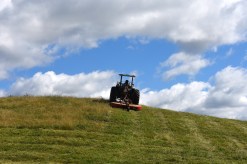The Hidden Techniques Used in Car Crash Reconstruction That You Should Know
Car crash reconstruction is a fascinating and complex field that plays a crucial role in understanding the dynamics of traffic accidents. It involves meticulous analysis and scientific methods to piece together the events leading up to, during, and after a collision. This article unveils the hidden techniques used by experts in car crash reconstruction that everyone should know, especially those involved in legal cases or seeking clarity on accident causes.
Understanding the Basics of Car Crash Reconstruction
At its core, car crash reconstruction is the process of investigating an accident scene to determine how and why the crash occurred. Experts gather physical evidence such as skid marks, vehicle damage, road conditions, and witness statements. By analyzing this data, they create a detailed timeline and scenario of events. This foundational step ensures that all subsequent analyses are based on accurate information.
Utilization of Photogrammetry for Precise Measurements
One lesser-known technique is photogrammetry — using photographs taken at the accident scene to create accurate 3D measurements without disturbing evidence. By capturing images from multiple angles, experts can reconstruct vehicle positions and movements with high precision. This non-invasive method preserves vital evidence while providing detailed spatial data essential for further analysis.
Application of Computer Simulation Software
Modern car crash reconstructions often employ sophisticated computer simulation programs that model vehicle dynamics during collisions. These simulations incorporate variables such as speed, impact angles, friction coefficients, and vehicle mass to replicate the crash event virtually. Such technology helps validate hypotheses about how crashes unfolded and assess factors like occupant injuries or airbag deployment timing.
Analyzing Event Data Recorders (Black Boxes)
Many vehicles are equipped with event data recorders (EDRs), commonly known as black boxes, which store critical information about vehicle operation moments before a collision. Data such as speed, braking force, throttle position, and seatbelt status can be extracted by specialists to gain invaluable insights into driver behavior and mechanical function during the incident.
Interpreting Tire Marks and Roadway Evidence
Tire marks on roads tell compelling stories about driver actions during emergencies — whether they braked suddenly or swerved sharply. Skilled analysts measure skid mark lengths to estimate speeds at braking points using physics formulas related to friction coefficients between tires and pavement surfaces. Coupled with roadway debris patterns or guardrail damages often present at scenes; these clues help reconstruct precise maneuvering details leading up to crashes.
Car crash reconstruction blends art with science through innovative techniques hidden behind courtroom battles or insurance claims resolutions worldwide. Understanding these methods not only highlights their importance but empowers individuals seeking justice or clarity following traumatic accidents by shedding light on how every detail matters in uncovering truth.
This text was generated using a large language model, and select text has been reviewed and moderated for purposes such as readability.





